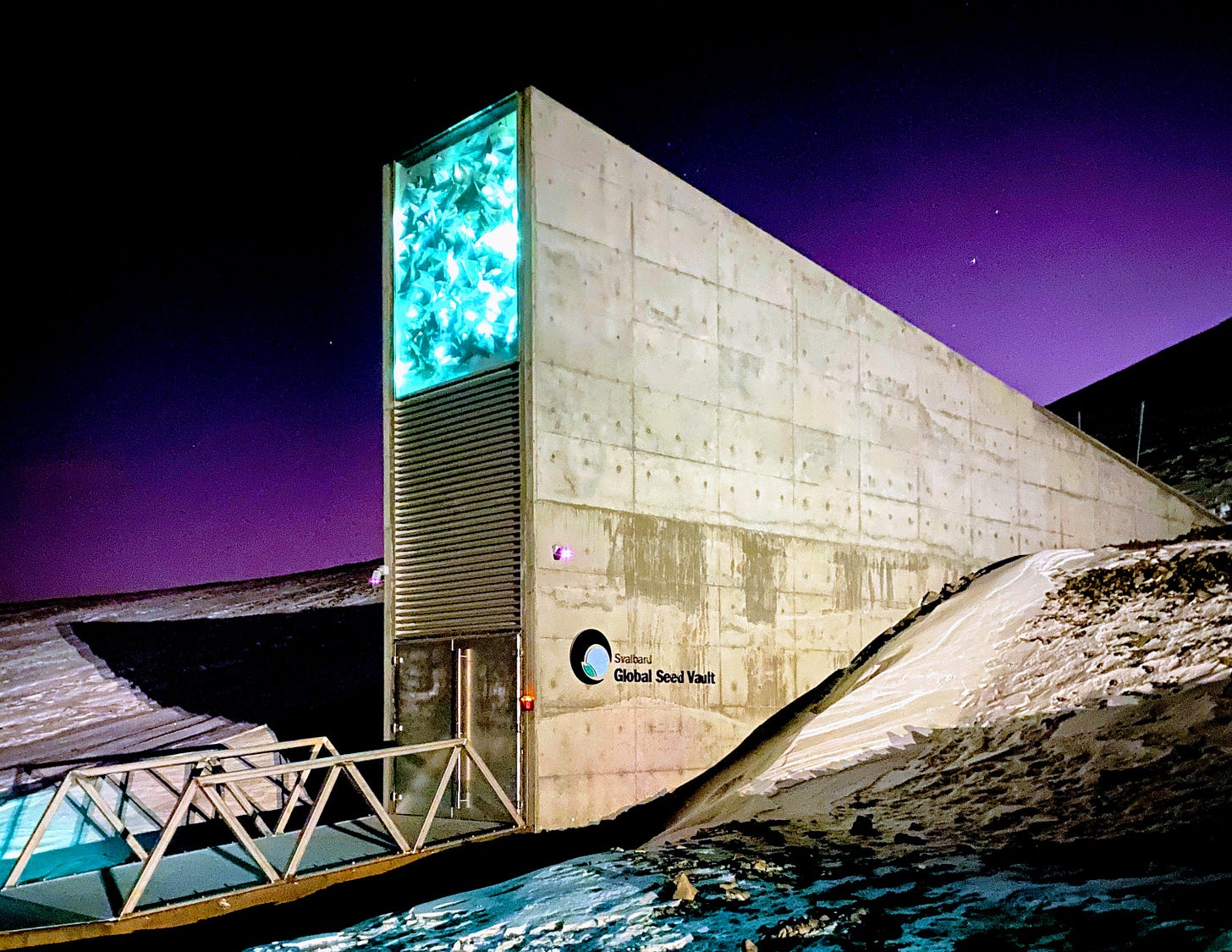No. 14 — Svalbard 🌲 Tech Tree 🐁 Computer Mouse Conference
Hope in the permafrost
My name is Linda. I write a bi-weekly newsletter about computer science, childhood and culture - and there are 9507 of you listening. If you enjoy this issue, please share it with anyone you think may find it useful.
Earlier this month I started to plan a trip to Svalbard. Having something to look forward to, however remote or unlikely, seems much needed at this stage of the pandemic. From Helsinki it’s first a 17 hour drive up to Tromsø and then an hour and a half flight to Svalbard. Very up north, even for a Finn.
So what’s in Svalbard? From my perspective, two things. The first is the Global Seed Vault, a plant bank opened in 2008, housing a wide variety (altogether over a million!) plant seeds. In case of a regional or global crises, the bank serves as a kind of biodiversity backup.
The second thing has to do with software. In early 2020 Github, a company that offers version control for code, and has become one of the biggest places where software gets made, shared and stored, opened in Svalbard the Github Arctic Code Vault. On 02/02/2020 Github captured all of the public code on their site and preserved that data into the vault.
Now of course there is no real reason to store code in permafrost. And as much as plant seeds below ground spark my Cixin Liu sensibilities, there is not much yet to see with the Global Seed Vault, though there is a breathtaking visitor center in the making.
However something about Svalbard makes me think about technology in a new way.
We are all very used to hearing how technology develops at breakneck speed, how code gets rewritten all the time and how there is no time for long-term thinking. The hardware of a phone from two years ago is redundant and software from early 2000s clunky.
I wonder a lot about how much of this is has to be true. Already today we have code that is written for hundreds of years: the Voyager 1 & 2 come to mind, but even some banking software dates a generation. The Tech Tree project, a part of the Arctic Code Vault, describes and documents how the world makes and uses software today, as well as offers an overview of the foundational technologies required to make and use computers. Many of these technologies and ideas are older than 70 years and in use daily.
Even though the speed of technology changes at exponential rates, the act of writing software has more to do with communication, syntax and semantics and thus changes slower.
I think a lot about how this kind of historical memory can be one way to think about the future.
What if our children got to know old software in classroom or developed their own future Rosetta stone’s of today’s foundational technology ideas? Instead of using always new frameworks or libraries spent time developing vocabulary and understanding of the code we already have?
What if instead of thinking doomsday and impending apocalypse we would see Svalbard as a place of grand, sweeping hope?
Linked List
In computer science, a linked list is a linear collection of data elements whose order is not given by their physical placement in memory. But here it is a selection of things I’ve been reading lately.
The Japanese manga series Dr. STONE (discovered through Robin Sloan) is a joyful and exhilarating expedition into the tech tree in practice: in it, a young scientist restarts civilisation from scratch. In each episode he tries (and mostly succeeds) to save humanity that has turned into stone, by inventing electricity, antibiotics and so forth. Watch here (at least for a sneak peek)
Paul Graham has a classic essay called The Hundred-Year Language where he outlines why programming languages don’t change at the same speed as transistor sizes. Kevin Kelly has written about the question many engineering students think about at some point of their career: if you were stranded on an island, would you be able to build a working computer?
How to Write a History of Writing. Packy McCormick wrote about the history of Excel, and this book from a few years ago shares the history of word processors and how they shaped a profession.
The Computer Mouse Conference 2021 sounds delightful. “Through lectures, video performances, live panel discussions, writing, a live zine, and a computer mouse tear-down workshop participants will explore the question: what does the mouse see?” April 29 & 30, online
Classroom
I’m hoping to surface and share stories from all of you and I’d love to see your creations! Here are a few teachers using Ruby in creative, fun and inspiring ways:
World Book Day was celebrated last week. In UK it often means kids dress up as their favorite characters. I collected a few pictures of something similar happening with Ruby in schools from around the world.
This giant decoder and other activities from STEAMLab Taiwan always make me smile.
Coding with BeeBots and Hello Ruby by Thea Clark is such a simple, but actionable idea. Thank you!
Or hit reply and answer below:
How can machines help us create a perspective of billions of years?
If you had to build a computer from scratch, where would you start?
The Rosetta Stone was a tax decree, but turned into something much bigger. What would a piece of software you created (or use) tell about us for humanity a hundred years into the future?


